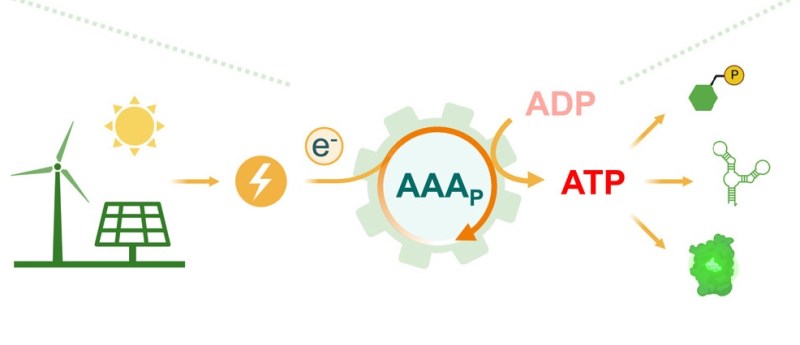Powering Biology with Batteries

We’ve all been there — you forgot your lunch, but there are AC outlets galore. Wouldn’t it be so much simpler if you could just plug in like your phone? …read more Continue reading Powering Biology with Batteries
Collaborate Disseminate

We’ve all been there — you forgot your lunch, but there are AC outlets galore. Wouldn’t it be so much simpler if you could just plug in like your phone? …read more Continue reading Powering Biology with Batteries
While DNA-based computing may not be taking over silicon quite so soon, there is progress in the works. In a paper published by Small, researchers from the University of Rochester demonstrate a molecular computing system capable of calculating square roots of integers up to 900. The computer is built …read more
Continue reading A DNA-Based Computer Calculates Square Roots Up To 900
The latest release from Oats Studios stars Dakota Fanning and takes place in a gritty, dangerous futuristic mining outpost. Continue reading Neill Blomkamp’s Latest Short Film ‘Zygote’ Is Pure Biological Horror
OSM stands for Oligonucleotide Synthesizer designed for use in Microgravity, meaning that it’s a device that makes arbitrary DNA strands (of moderate length) in space. Cool eh? I’ve been working on this project for the last eight months with a wonderful team of fellow hackers as part of the Stanford Student Space Initiative, and I’d like to share what we’re doing, what we’ve already done, and where we’re going.
Why space? Well, first of all, space is cool. But more seriously, access to arbitrary DNA in space could accelerate research in a plethora of fields, and the ability …read more
![]() Continue reading OSM (Pronounced Awesome) Hardware Makes DNA in Space
Continue reading OSM (Pronounced Awesome) Hardware Makes DNA in Space
Microfluidics, the precise control and manipulation of small volumes of liquids, is heavily used in any field that does small-scale experiments with expensive reagents (We’re looking at you, natural sciences.) However, the process commonly used to create microfluidic devices is time and experience intensive. But, worry not: the Uppsala iGEM team has created Chipgineering: A manual for manufacturing a microfluidic chip.
Used while developing everything from inkjet print heads to micro-thermal technologies, microfluidic systems are generally useful. Specifically, Uppsala’s microfluidic device performs a simple biological procedure, a heat-shock transformation, as a proof of concept. Moreover, Uppsala uses commonly available materials: …read more
Synthetic biology meets smart manufacturing. Continue reading ‘Urban Biomining’ Could Be Used to Print Electronics on Earth and Beyond
Your daily round-up of some of the other stories in the news Continue reading News in brief: NASA finds lost spaceships; data stored on an atom; Viber adds self-destruct chats
Years ago, prototyping microfluidic systems was a long, time-intensive task. With inspiration from DIY PCB fabrication techniques, that time is now greatly reduced. However, even with the improvements, it still takes a full day to go from an idea to a tangible implementation. However, progress creeps in this petty pace from day to day, and in accordance, a group of researchers have found a way to use 3D printed molds to create microfluidic LEGO bricks that make microfluidic prototyping child’s play.
For the uninitiated, microfluidics is the study and manipulation of very small volumes of water, usually a millionth of …read more
High-altitude balloons are used to perform experiments in “near space” at 60,000-120,000 ft. (18000-36000m). However, conditions at such altitude are not particularly friendly and balloons have to compete with ultraviolet radiation, bad weather and the troubles of long distance communication. The trick is to send up a live entity to make repairs as needed. A group of students from Stanford University and Brown University repurposed nature in their solution. Enter Bioballoon: a living high-altitude research balloon.
Instead of using inorganic materials, the Stanford-Brown International Genetically Engineered Machine (iGEM) team designed microbes that grow the components required to build various tools …read more
Biology and technology are moving closer and experts are wondering if this poses a new security threat Continue reading Mixing biology with technology: what could possibly go wrong?